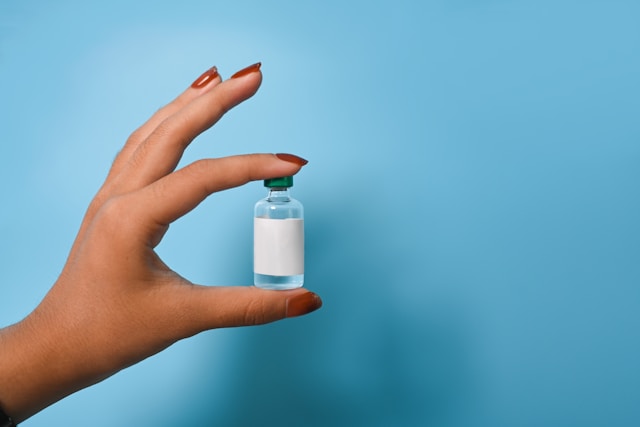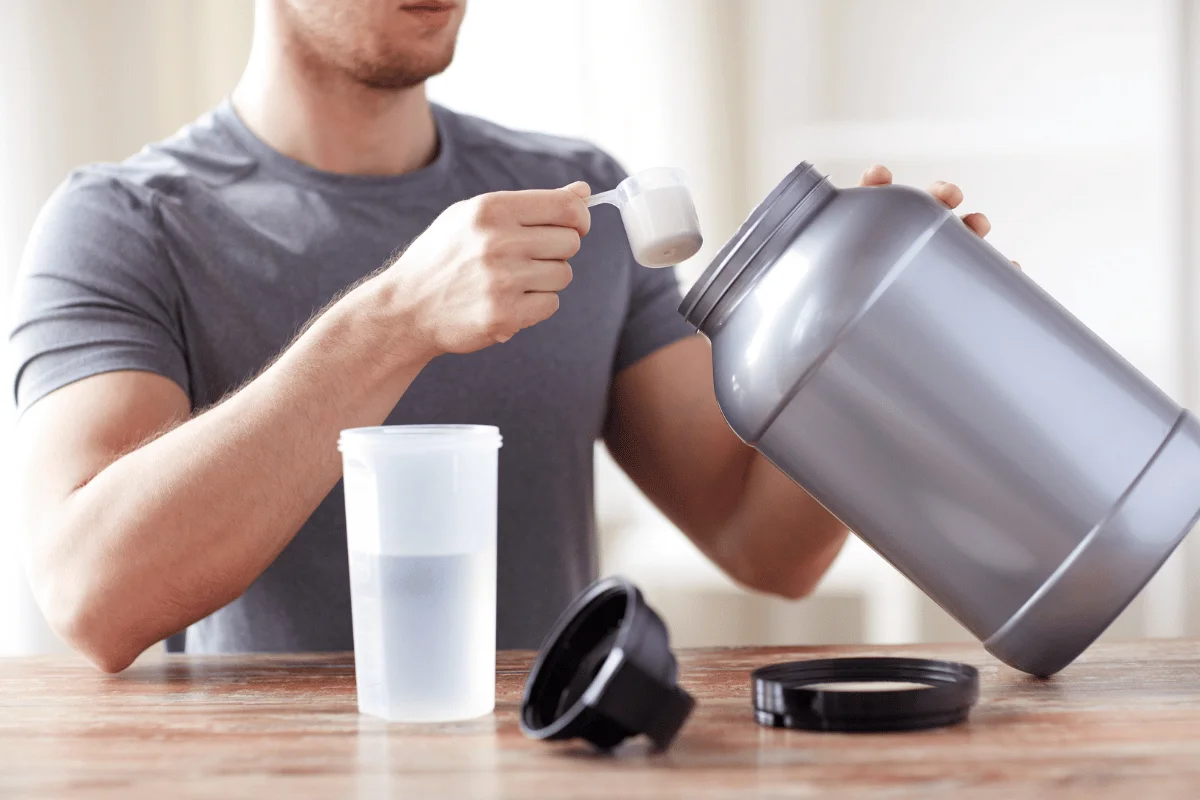[Disclaimer: This article is for informational purposes only and does not constitute medical advice. Always consult with a qualified healthcare provider before starting any peptide therapy.]
Many people wonder if peptides and steroids work the same way in the body. The simple answer is no – they’re completely different substances with distinct mechanisms and safety profiles.
While both can help with muscle growth and recovery, peptides and steroids take very different approaches to reach these goals.
Key Takeaways
- Peptides and steroids are completely different substances that work through distinct mechanisms in your body.
- Peptides are generally much safer than anabolic steroids with fewer and milder side effects.
- Steroids are heavily regulated controlled substances while peptide laws are more complex and changing.
- Peptides work with your natural hormone systems while steroids override and suppress them.
What’s the Difference Between Peptides and Steroids?
The core difference lies in their basic structure and how they function.
Peptides are short chains of amino acids that act as natural messengers in your body. They work by stimulating your body’s own hormone production rather than replacing it. Think of them as sending signals to tell your cells what to do.
Anabolic steroidsubstancesare synthetic versions of testosterone. They’re ring-shaped sterol molecules that directly flood your system with artificial hormone levels[1].
Here’s a simple comparison:
| Peptides | Steroids |
|---|---|
| Natural amino acid chains | Synthetic testosterone derivatives |
| Work with your body’s systems | Override natural hormone production |
| Targeted signaling | Widespread hormonal effects |
| Generally milder effects | More dramatic but riskier results |
Benefits of Peptides vs Steroid Advantages
Both peptides and steroids offer unique benefits, but they work in very different ways.
Peptide therapy provides targeted benefits without disrupting your natural hormone balance. Popular peptides like BPC-157 help with tissue repair and wound healing, while growth hormone-releasing peptides support muscle repair and recovery[2].
Key peptide benefits include:
- Better sleep quality and recovery
- Enhanced tissue regeneration
- Joint health support
- Immune system boost
- Improved metabolism
Steroids deliver more dramatic muscle-building results. Older studies show users can gain an average of 2.2 kg of lean body weight during treatment cycles[3]. About 50% of users see significant strength improvements.
However, these gains come with much higher risks.
Are Peptides Safer Than Steroids?
When comparing safety, peptides have a clear advantage over anabolic steroids.
Peptides offer a much gentler approach to body improvement. Most side effects are mild and temporary, like injection site irritation or slight headaches.
The biggest safety concern with peptides isn’t the substances themselves – it’s product quality from unregulated sources. Always buy from reputable suppliers with proper testing.
Steroid use carries serious health risks that can be permanent. The cardiovascular system takes a major hit, with increased risk of heart attacks and strokes[4].
Related Article: Pregnenolone vs. DHEA: Which Is Best for Your Health?
Third-Party Tested, 99% Purity
Order lab-verified peptides from our top recommended vendor.

Side Effects of Peptides vs Effects of Anabolic Steroids
The side effect profiles show why many people choose peptides over traditional steroids.
Common peptide side effects are typically mild:
- Redness at injection sites
- Mild nausea (with oral forms)
- Temporary headaches
- Increased appetite with growth hormone peptides
Most users tolerate peptides well with minimal disruption to daily life.
“Anabolic-androgenic steroids (AAS) produces toxic effects on the cardiovascular system, and it is necessary to ensure that more people know this about AAS, including medical personnel.”
Liu et al., Chinese medical journal vol. 132,18
Anabolic steroid effects can be severe and long-lasting:
Physical risks:
- Liver damage and dysfunction[5]
- High blood pressure and heart problems[6]
- Kidney disease[7]
- Testicular shrinkage in men[8]
Mental effects:
- Mood swings and aggression
- Depression and anxiety
- Behavioral changes including “roid rage”[9]
Hormonal disruption:
- Suppressed natural testosterone production[10]
- Infertility in both men and women[11]
- Breast development in men (gynecomastia)[12]
The risk-to-benefit ratio heavily tips against steroids for most people.
💡PEPTIDE PICKS: MORE TO EXPLORE
- Dealing with low testosterone issues? Peptide therapy might be a safer option than traditional treatments. Learn about peptide therapy for testosterone.
- Looking to boost your endurance performance? Certain peptides can help with recovery and stamina. Discover the top 7 peptide therapies for endurance athletes.
- Wondering if SARMs or peptides are safer? Each approach works differently for muscle building. Read our SARMs vs. peptides comparison.
Why Choose Peptides Over Steroids in Bodybuilding?
Peptides make sense for long-term health and sustainable results.
Unlike steroids, which can shut down your natural testosterone production, peptides work with your body’s existing systems. You get improved muscle mass and recovery without compromising your hormone health.
Many athletes and bodybuilders appreciate that peptides support:
- Natural growth hormone production
- Better sleep for muscle repair
- Joint health and injury prevention
- Sustainable gains without harsh crashes
Use peptides when you want steady, maintainable progress. Steroids may give faster results, but the health costs often outweigh the benefits.
Legal Status and Peptide Therapy Access
The legal landscape differs significantly between these substances.
Anabolic steroids are Schedule III controlled substances in the United States. Possession without a prescription is illegal and can result in serious legal consequences.
They’re also banned by WADA for competitive athletes, with lifetime suspensions possible for positive tests.
Peptide regulation is more complex and changing rapidly. As of 2024, the FDA has tightened restrictions on peptide compounding, making many popular peptides harder to access legally.
Only FDA-approved peptides can be prescribed as medicine. Many performance peptides fall into a gray area where they’re sold as “research use only” but cannot legally be used for human treatment.
Important safety note: Always work with licensed healthcare providers when considering any peptide therapy. They can help you access legal, pharmaceutical-grade products and monitor your health.
Related Article: Bodybuilder’s Guide To Safe Peptides For Muscle Building
Building Muscle Safely: The Bottom Line
Peptides and steroids are not the same, and the differences matter for your health and legal safety.
Peptides like BPC-157, CJC-1295, and other therapeutic compounds offer a safer path to improved recovery, muscle repair, and overall wellness. They work by supporting your body’s natural processes rather than overwhelming them.
Steroids in bodybuilding may deliver faster muscle gain, but they come with serious health risks and legal consequences that can affect you for life.
The choice is clear for most people seeking sustainable health improvements. Peptides provide meaningful benefits with significantly lower risks when sourced properly and used under medical guidance.
Remember that both substances require careful consideration and professional oversight. Your long-term health should always come first, regardless of your fitness goals.
Whether you’re interested in peptide hormones for recovery or considering any performance substance, consult with a qualified healthcare provider who understands these treatments. They can help you make informed decisions based on your individual health profile and goals.
MEDICAL REVIEWER
Dr. Michael Fortunato, MD
Dr. Michael Fortunato is a board-certified anesthesiologist specializing in hormone optimization therapy and peptide treatments. He holds advanced certification in Bioidentical Hormone Replacement Therapy (BHRT) and brings years of clinical experience to ensure content accuracy and clinical relevance as a medical reviewer.
References
[1] “Testosterone: Synthesis, Effects and Regulation,” 2021.
[2] C.-H. Chang, W.-C. Tsai, Y.-H. Hsu, and J.-H. Pang, “Pentadecapeptide BPC 157 Enhances the Growth Hormone Receptor Expression in Tendon Fibroblasts,” MDPI AG, Nov. 2014. doi: 10.3390/molecules191119066.
[3] D. R. Lamb, “Anabolic steroids in athletics: How well do they work and how dangerous are they?,” SAGE Publications, Jan. 1984. doi: 10.1177/036354658401200105.
[4] J.-D. Liu and Y.-Q. Wu, “Anabolic-androgenic steroids and cardiovascular risk,” Ovid Technologies (Wolters Kluwer Health), Sep. 2019. doi: 10.1097/cm9.0000000000000407.
[5] A. Petrovic et al., “Anabolic androgenic steroid-induced liver injury: An update,” Baishideng Publishing Group Inc., Jul. 2022. doi: 10.3748/wjg.v28.i26.3071.
[6] F. Gheshlaghi, M.-R. Piri-Ardakani, G. Masoumi, M. Behjati, and P. Paydar, “Cardiovascular manifestations of anabolic steroids in association with demographic variables in body building athletes,” Journal of Research in Medical Sciences, vol. 20, pp. 165–168, 2015.
[7] S. L. A. Parente Filho et al., “Kidney disease associated with androgenic–anabolic steroids and vitamin supplements abuse: Be aware!,” Elsevier BV, Jan. 2020. doi: 10.1016/j.nefro.2019.06.003.
[8] K. Boregowda, L. Joels, J. W. Stephens, and D. E. Price, “Persistent primary hypogonadism associated with anabolic steroid abuse,” Elsevier BV, Jul. 2011. doi: 10.1016/j.fertnstert.2011.04.029.
[9] R. Chegeni, S. Pallesen, J. McVeigh, and D. Sagoe, “Anabolic-androgenic steroid administration increases self-reported aggression in healthy males: a systematic review and meta-analysis of experimental studies,” Springer Science and Business Media LLC, Mar. 2021. doi: 10.1007/s00213-021-05818-7.
[10] P. Bond, D. L. Smit, and W. de Ronde, “Anabolic–androgenic steroids: How do they work and what are the risks?,” Frontiers Media SA, Dec. 2022. doi: 10.3389/fendo.2022.1059473.
[11] R. de A. Azevedo, B. Gualano, T. A. Teixeira, B. C. G. Nascimento, and J. Hallak, “Abusive use of anabolic androgenic steroids, male sexual dysfunction and infertility: an updated review,” Frontiers Media SA, Apr. 2024. doi: 10.3389/ftox.2024.1379272.
[12] M. Beniwal, K. Singh, P. Singh, A. Sharma, and S. Beniwal, “The Burden of Anabolic Androgenic Steroid-Induced Gynecomastia,” Georg Thieme Verlag KG, Jul. 2023. doi: 10.1055/s-0043-1771293.








